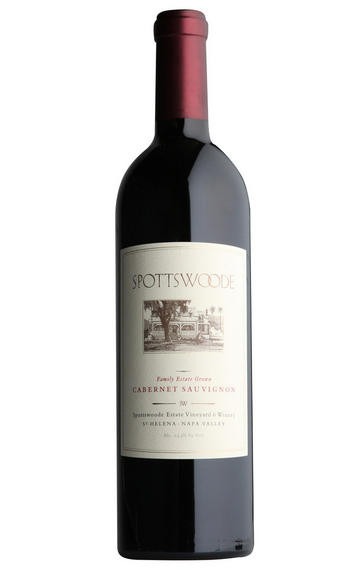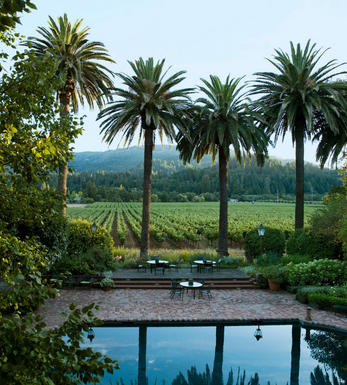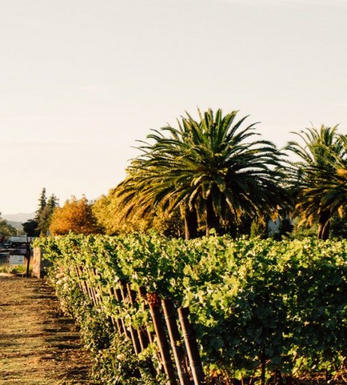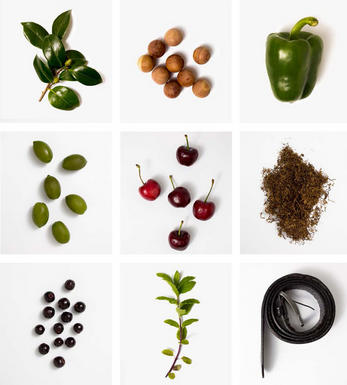
2020 Spottswoode, Cabernet Sauvignon, St Helena, Napa Valley, California,USA

Critics reviews
The 2020 Cabernet Sauvignon, tasted as a barrel sample, has 4% Cabernet Franc and 1% Petit Verdot in the blend. Deep garnet-purple in color, it springs with notes of cedar chest, cinnamon toast, and black cherry preserves, leading to a core of blackcurrant pastilles, potpourri, and mocha. Medium-bodied, and big on flavors, the palate delivers mouth-coating black fruits with a rock-solid structure of firm tannins and lively acidity, finishing long. Approximately 3,500 cases are to be bottled. Spottswoode finished picking just the day before the Glass Fire broke out. Winemaker Aron Weinkauf says that there was not a lot smoke here from that year's LNU fires.
Drink 2025 - 2050
Lisa Perrotti-Brown MW, The Wine Independent (September 2022)
Picked at just 23 Brix in late August when there was smoke but before any major Glass Fire impact. Made as usual. They sent as many as 300 samples to labs in Australia and British Columbia. To be released September 2023.
Deep crimson. A little spicy on the nose but overall ‘cool’ (!) and restrained with a notably dry finish. Not quite as gloriously persistent as usual.
Drink now to 2030
Jancis Robinson MW, JancisRobinson.com (February 2023)
Tasted blind, in a lineup that included vintages back to 2010, a barrel sample of Spottswoode's 2020 Cabernet Sauvignon stood out as being one of the most exciting efforts. Full-bodied, ripe and rich without being overbearing, it delivers concentrated black cherry and cassis fruit framed by supple, velvety-textured tannins. It's long on the finish, with an attractively soft, dusty-loamy texture and no overt signs of a fire-troubled Napa vintage.
Drink 2024 - 2045
Joe Czerwinski, Wine Advocate (September 2022)
Aromas of blackcurrant, hazelnut and chocolate, with hints of mint and sage that follow through to a medium to full body, with wonderful soft and fine tannins that give a velvety texture and persistent finish. So balanced and refined. Subtle. Didn’t include wine from vineyards in Atlas Peak this year. An excellent 2020.
Drinkable, but will improve so well in the cellar.
James Suckling, JamesSuckling.com (March 2023)
Tasted out of bottle, the 2020 Cabernet Sauvignon Estate showed beautifully, and it's certainly in the top handful of wines in the vintage. Offering beautiful red, blue, and black fruits as well as notes of tobacco, violets, and chalky minerality, it has medium to full-bodied richness, ripe, high-quality tannins, and outstanding length. It doesn't show any signs of smoke taint and is a beautiful, incredibly impressive effort in the vintage that I suspect will evolve gracefully for two decades.
Drink now to 2043
Jeb Dunnuck, JebDunnuck.com (February 2023)
About this WINE

Spottswoode Estate
Spottswoode is a historic, family-owned Napa vineyard and winery renowned for its exceptional Cabernet Sauvignon. Established in 1882 by George Schonewald, the estate is distinguished by the pre-Prohibition Victorian building depicted on the wine label. Spottswoode was named by Mrs. Albert Spotts in 1910, and it was acquired by Mary and Jack Novak in 1972. Mary released Spottswoode’s first Cabernet Sauvignon in 1982, exactly one hundred years after the estate was founded.
Situated on the western edge of St. Helena at the foot of the Mayacamas Mountains, the Spottswoode terroir is ideal for growing fine wine grape varieties. The forty acres are given primarily to Cabernet Sauvignon, with small blocks of Cabernet Franc, Petit Verdot, and Sauvignon Blanc. The estate has been farmed organically since 1985, and the vineyard was certified organic in 1992.
Today, Mary’s daughters are at the helm: Beth Novak Milliken manages the winery, and Lindy Novak oversees national marketing.

St. Helena
St. Helena is situated in the heart of Napa Valley, in California, approximately midway between the towns of Napa and Calistoga. It is known for its picturesque vineyards and is a central hub within the Napa Valley wine-growing region.
Like much of Napa Valley, St. Helena experiences a Mediterranean climate characterised by warm, dry summers and cool, wet winters. The climate is well-suited for grape cultivation, particularly for Cabernet Sauvignon, the region's flagship varietal.
The soils are diverse, ranging from gravelly and alluvial soils to volcanic and sedimentary deposits. These varied soil types contribute to the complexity and unique characteristics of wines produced in the region.
St. Helena is known for producing high-quality wines, emphasising Cabernet Sauvignon. Other varietals, such as Merlot, Zinfandel, and Chardonnay, are also cultivated in the area. The region is home to several renowned wineries and vineyards that have significantly shaped the reputation of Napa Valley wines. Some notable wineries include Beringer Vineyards, and Heitz Wine Cellars.

Cabernet Sauvignon
The most famous red wine grape in the world and one of the most widely planted.
It is adaptable to a wide range of soils, although it performs particularly well on well-drained, low-fertile soils. It has small, dusty, black-blue berries with thick skins that produce deeply coloured, full-bodied wines with notable tannins. Its spiritual home is the Médoc and Graves regions of Bordeaux where it thrives on the well-drained gravel-rich soils producing tannic wines with piercing blackcurrant fruits that develop complex cedarwood and cigar box nuances when fully mature.
The grape is widely planted in California where Cabernet Sauvignon based wines are distinguished by their rich mixture of cassis, mint, eucalyptus and vanilla oak. It is planted across Australia and with particular success in Coonawarra where it is suited to the famed Terra Rossa soil. In Italy barrique aged Cabernet Sauvignon is a key component in Super Tuscans such as Tignanello and Sassicaia, either on its own or as part of a blend with Sangiovese.


Buying options
Add to wishlist
Description
The 2020 Cabernet Sauvignon, tasted as a barrel sample, has 4% Cabernet Franc and 1% Petit Verdot in the blend. Deep garnet-purple in color, it springs with notes of cedar chest, cinnamon toast, and black cherry preserves, leading to a core of blackcurrant pastilles, potpourri, and mocha. Medium-bodied, and big on flavors, the palate delivers mouth-coating black fruits with a rock-solid structure of firm tannins and lively acidity, finishing long. Approximately 3,500 cases are to be bottled. Spottswoode finished picking just the day before the Glass Fire broke out. Winemaker Aron Weinkauf says that there was not a lot smoke here from that year's LNU fires.
Drink 2025 - 2050
Lisa Perrotti-Brown MW, The Wine Independent (September 2022)
wine at a glance
Delivery and quality guarantee